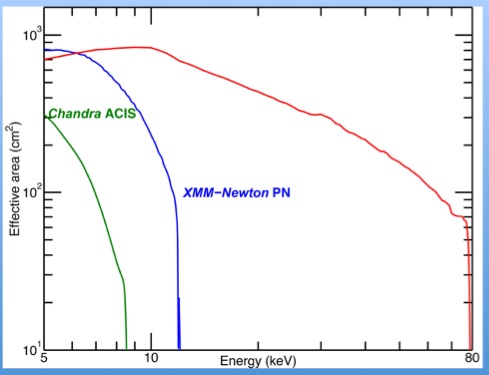|
The primary reference for the NuSTAR mission is the article by Harrison, F.A. et al. (2013) ApJ, 770, 103 (2.9 MB PDF file) which contains information about the observatory and science instrument, the baseline science program, and the in-flight performance. See also the NuSTAR Observatory Guide (7 MB pdf file) which provides information for potential proposers to the NuSTAR Guest Observer Program.
 NuSTAR Mission Parameters
Key NuSTAR Performance Parameters

Optics
NuSTAR employs grazing incidence mirrors to focus the high-energy (3-79 keV)
radiation. Two Wolter-I design telescopes point at the same
portion of the sky.
Deployable MastNuSTAR is a Small Explorer mission and had to fit inside the Pegasus launch vehicle: at launch, NuSTAR was no more than two meters long and one meter in diameter. Therefore, to attain the required 10m focal length needed for its telescopes, NuSTAR used a unique deployable mast, or boom, that extended the optics after the payload was in orbit. More details on the deployable mast.
CdZnTe DetectorsNuSTAR has two detector units, each at the focus of one of the two co-aligned NuSTAR optics units. The focal planes are each comprised of four 32 x 32 pixel Cadmium-Zinc-Tellurium (CdZnTe, or CZT) detectors. These are "state-of-the-art" room-temperature semiconductors which are very efficient at turning high energy photons into electrons. More details on the detectors.
|


